Indoor plants not only add beauty to our living spaces but also offer numerous health benefits, such as improving air quality and reducing stress levels. A critical aspect of maintaining healthy indoor plants is choosing the right potting mix, a carefully formulated blend of components that support plant growth, moisture retention, aeration, and drainage.
According to a study published in the journal HortScience, the potting mix plays a pivotal role in creating an optimal environment for plant roots, ultimately impacting their overall health and growth.
In this comprehensive guide, we will explore how to choose the perfect potting mix for your indoor plants, taking into account their specific needs, various potting mix components, and how to address common potting mix issues. By understanding the science behind potting mix and applying the practical tips and examples provided, you’ll be well-equipped to create a thriving environment for your indoor plants.
What is the role of potting mix in indoor plant growth?
Potting mix is a carefully formulated blend of components that provides support, moisture retention, aeration, and drainage, all of which are essential for optimal plant growth. In this section, we will explore each of these aspects in more detail.
Support for roots
A good potting mix should be capable of providing stable support for plant roots. Strong roots help anchor the plant and aid in the uptake of water and nutrients. An ideal potting mix should allow the roots to grow freely without any physical barriers while still providing ample support for the plant structure.
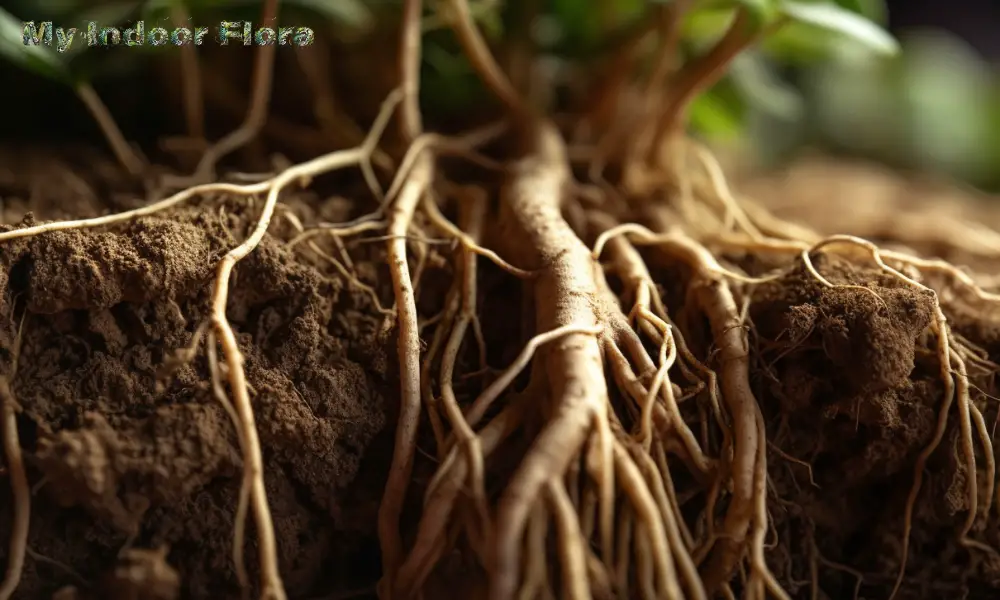
Retention of moisture and nutrients
The ability of a potting mix to hold sufficient water and nutrients is vital to sustain your plant between watering sessions. A study published in the journal HortTechnology found that a well-balanced mix, with appropriate moisture and nutrient retention capabilities, can help plants grow more vigorously and with fewer incidences of diseases and pests.
Aeration for proper root development
Roots need oxygen to function properly, and a potting mix with good aeration allows them to breathe, contributing to their overall health. A research article published in the journal Frontiers in Plant Science highlighted the importance of aeration in potting mixes, stating that well-aerated mixes can significantly impact root development and overall plant health.
Drainage to prevent root rot
Excess water can lead to root rot, a common problem in indoor plants. A potting mix with adequate drainage helps remove excess water and prevents root diseases. A study published in the journal Plant Disease revealed that proper drainage in potting mixes can significantly reduce the risk of root rot caused by pathogens like Pythium and Phytophthora.
What are the different types of potting mix components and their benefits?
There are various components that can be used in potting mixes, each with their unique benefits. Here, we will explore the most common components and how they contribute to a healthy potting mix.
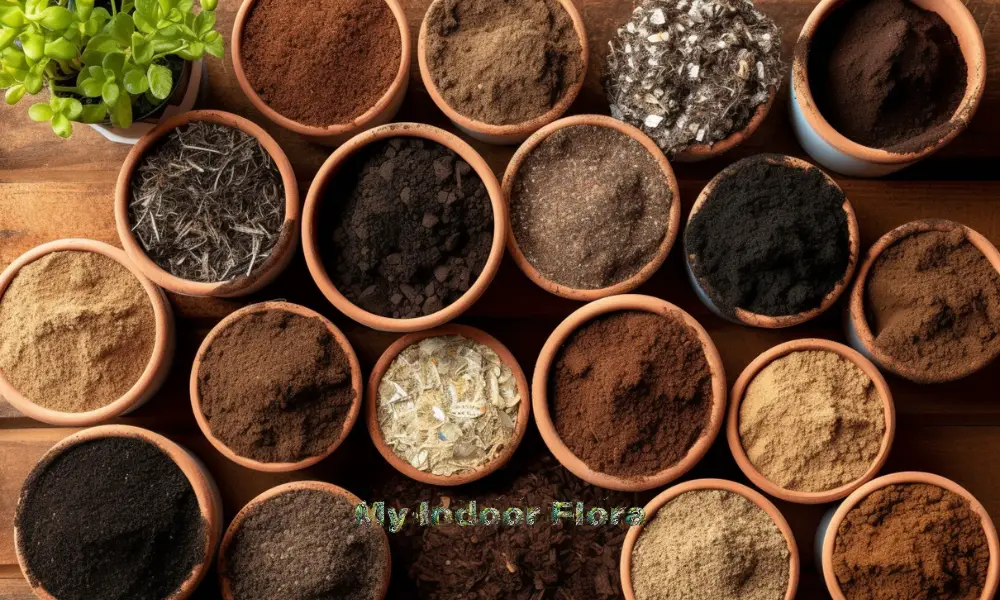
Peat moss: moisture retention and acidic pH
Peat moss is a popular potting mix component due to its ability to retain moisture and provide an acidic pH, which is ideal for many indoor plants. However, it can be challenging to re-wet if allowed to dry out completely. Sustainability concerns have also arisen due to the environmental impact of peat moss harvesting, leading many gardeners to seek alternatives like coir.
Coir (coconut fiber): moisture retention, aeration, and sustainability
Coir, made from coconut husks, is an environmentally friendly alternative to peat moss. It retains moisture well while still providing excellent aeration. Additionally, coir has a neutral pH, making it suitable for a wide range of plants.
Perlite: increased drainage and aeration
Perlite is a lightweight volcanic rock that improves drainage and aeration in potting mixes. It is especially useful for plants that require well-draining soil, like succulents and cacti.
Vermiculite: moisture and nutrient retention
Vermiculite is a mineral that expands when heated, forming a lightweight, sponge-like structure. It can retain water and nutrients, making it an excellent addition to potting mixes for plants that prefer consistently moist conditions.
Bark: aeration and drainage
Bark, typically from pine trees, can be added to potting mixes to improve aeration and drainage. It is particularly useful for orchids and other epiphytic plants that require excellent air circulation around their roots.
Compost: nutrient-rich organic matter
Compost is decomposed organic matter that provides a slow-release source of nutrients for plants. Incorporating compost into your potting mix can improve its fertility and overall plant health.
Sand: improved drainage and structure
Sand can be added to potting mixes to improve drainage and provide structural support for plant roots. Coarse sand is preferred over fine sand, as the larger particles create better aeration and drainage.
How to determine the specific needs of your indoor plant species?
Different plants have unique requirements, and it’s crucial to know what these are to create the ideal potting mix. Here’s how to determine your plant’s needs:
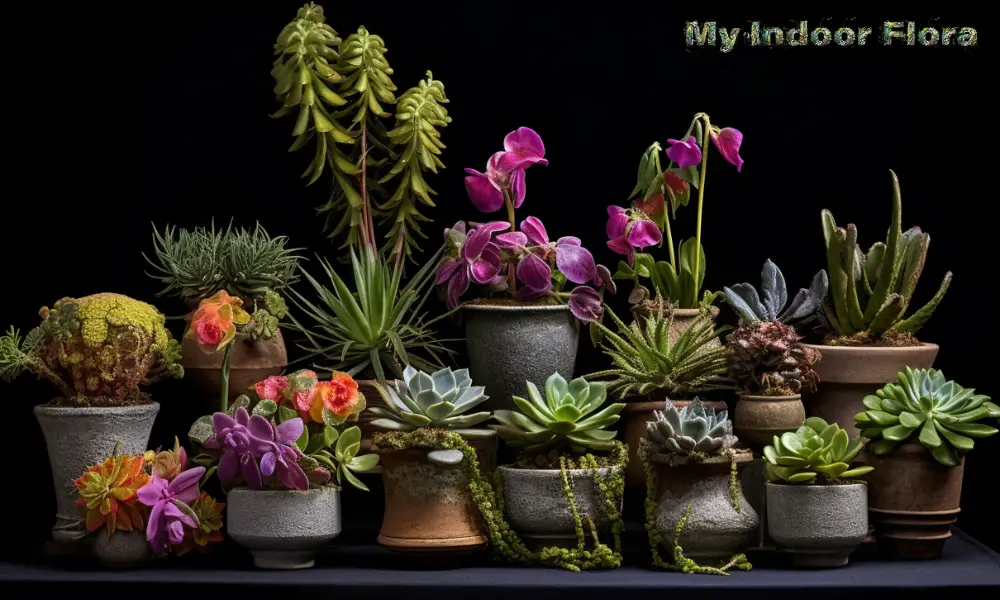
Research your plant’s natural habitat and requirements
Understanding the natural environment of your plant species can provide valuable insights into its soil, water, and nutrient requirements. Many resources are available, such as gardening books, online resources, and even plant identification apps that can help you gather this information.
Identify the plant’s preferred soil type, pH level, and nutrient needs
Each plant species has a preferred soil type, pH level, and nutrient profile. For example, African violets prefer a slightly acidic potting mix with a pH between 6.0 and 6.5, while cacti and succulents thrive in a mix with a pH between 5.5 and 6.0 and excellent drainage properties. Identifying these preferences will enable you to create a tailored potting mix that caters to your plant’s specific needs.
Determine the plant’s water and drainage preferences
Some plants, such as ferns and peace lilies, prefer consistently moist conditions, while others, like snake plants and succulents, need a well-draining mix that dries out between waterings. Understanding these preferences is essential when selecting the right components for your potting mix.
How to create a balanced potting mix based on your plant’s needs?
Once you’ve assessed your plant’s moisture, drainage, and nutrient requirements, it’s time to select the right components and adjust the mix proportions for optimal plant growth.
Assessing your plant’s moisture, drainage, and nutrient requirements
Consider your plant’s preferences for moisture, drainage, and nutrients. For example, if you have a moisture-loving plant, you may want to include more coir or vermiculite in your mix. On the other hand, if your plant requires excellent drainage, incorporating perlite or bark can be beneficial.
Selecting the right components to achieve the desired balance
Based on your plant’s specific needs, choose a combination of components that will provide the ideal balance of moisture retention, drainage, aeration, and nutrients. Be mindful of the pH requirements of your plant when selecting components, as some materials, like peat moss, can have a significant impact on the overall pH of the mix.
Adjusting the mix proportions for optimal plant growth
Experiment with the proportions of each component in your potting mix until you achieve the desired balance. For example, a moisture-loving plant may require a mix containing 50% coir, 30% vermiculite, and 20% compost, while a plant needing excellent drainage might benefit from a mix of 40% bark, 40% perlite, and 20% sand.
What is the importance of soil pH for indoor plants and how to adjust it?
Soil pH affects the availability of nutrients in the potting mix, making it a critical factor in plant health. Here, we will discuss the effect of pH on nutrient availability, how to identify your plant’s ideal pH range, and methods to modify the pH level of your potting mix.
The effect of pH on nutrient availability
The pH of your potting mix influences the solubility of nutrients, which in turn affects their availability to plants. Most nutrients are readily available in slightly acidic to neutral pH ranges (between 6.0 and 7.0). However, some plants, like blueberries and azaleas, prefer more acidic conditions, while others, such as spider plants, grow best in slightly alkaline environments.
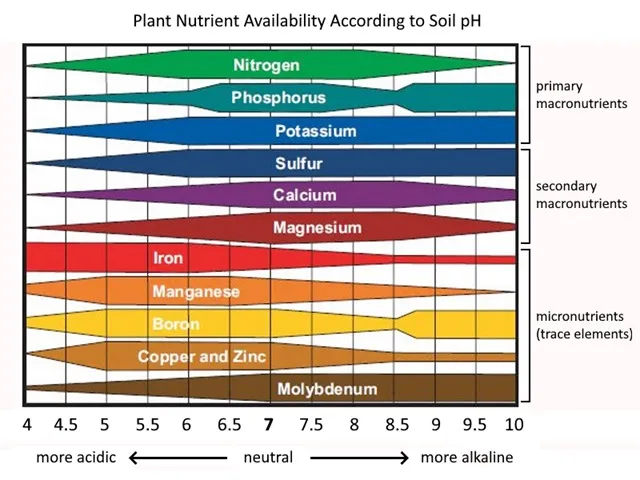
Identifying your plant’s ideal pH range
Research your plant’s preferred pH range to ensure it receives the necessary nutrients for optimal growth. Many resources, like plant care guides and online databases, can provide this information. If you’re unsure, most houseplants will grow well in a slightly acidic to neutral pH range.
Using lime or sulfur to modify the pH level of your potting mix
If your potting mix’s pH is outside the ideal range for your plant, you can adjust it using lime (calcium carbonate) or sulfur. Lime increases the pH, making the mix more alkaline, while sulfur lowers the pH, making it more acidic. Start with small amounts and test the pH regularly using a soil pH meter to avoid overcorrecting.
How to identify and avoid common potting mix problems?
Even with the right potting mix, issues can arise. Here, we discuss how to recognize and address common potting mix problems.
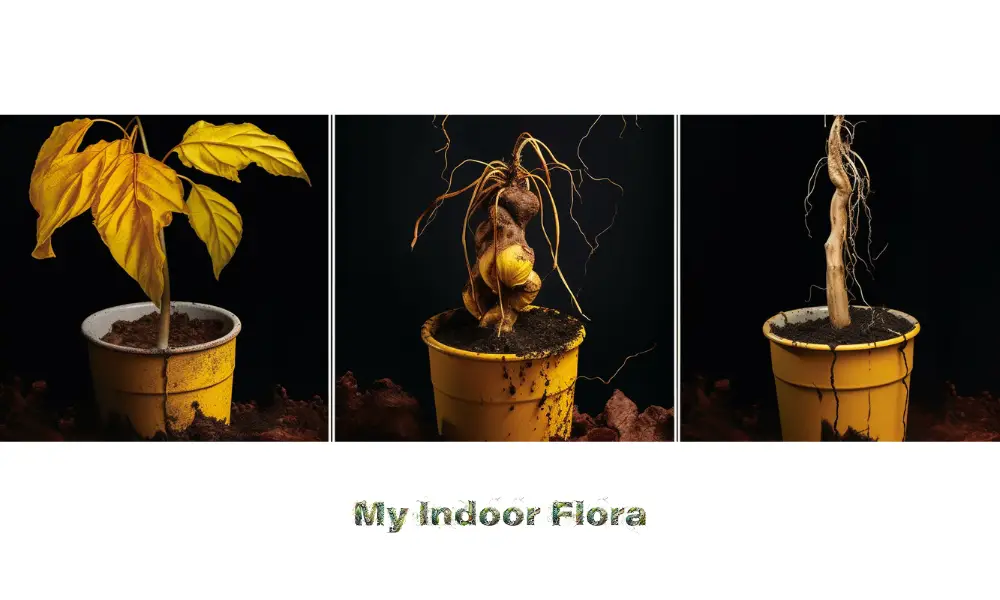
Recognizing signs of poor drainage or aeration
If your plant’s leaves are yellowing or wilting despite regular watering, it could be a sign of poor drainage or aeration in the potting mix. To remedy this issue, you can add perlite, bark, or sand to improve drainage and aeration.
Detecting nutrient deficiencies or excesses
Nutrient imbalances can manifest as various symptoms, including chlorosis (yellowing leaves), necrosis (dead spots), and stunted growth. If you suspect a nutrient issue, consider having your potting mix tested by a soil lab or using a home soil test kit to identify the problem and make the necessary adjustments.
Addressing issues with pests or diseases
Pests and diseases can be introduced through contaminated potting mix or poor cultural practices. Sterilize your potting mix before use by heating it in an oven or microwave, and ensure that your pots and tools are clean. Additionally, practice good plant hygiene by removing dead leaves and debris, and avoiding overwatering.
When and how to repot your indoor plant with a new potting mix?
Knowing when to repot your plant and how to do it correctly is vital for its long-term health. Here, we discuss the signs that your plant needs repotting, choosing the right pot, and transplanting your plant into its new mix.
Signs that your plant has outgrown its current pot or requires fresh potting mix
Your plant may need repotting if it exhibits any of the following signs.
- Roots growing out of drainage holes or wrapping around the soil surface
- Slowed growth or reduced vigor
- A potting mix that dries out quickly or becomes compacted
Choosing the right pot size and type for your plant
Select a pot that is one to two sizes larger than the current one, with adequate drainage holes. The material of the pot can also impact your plant’s health; for example, terra cotta pots are porous and allow for better aeration, while plastic pots retain moisture longer.
Properly transplanting your plant and introducing it to the new mix
When repotting, gently remove the plant from its current pot, and tease apart any root-bound roots to encourage new growth. Place the plant in the new pot and fill it with your freshly prepared potting mix, ensuring that the plant is positioned at the same depth as it was in the previous pot. Firmly press the mix around the roots to provide support and eliminate air pockets. Water the plant thoroughly to help settle the mix.
Conclusion
Choosing the right potting mix for your indoor plants is a crucial step in ensuring their health and growth. By understanding the role of potting mix, assessing your plant’s specific needs, selecting the right components, and addressing any potential issues, you can create the perfect environment for your indoor plants to flourish. With this comprehensive guide, you’ll be well-equipped to create and maintain an ideal potting mix, leading to happier and healthier plants.
